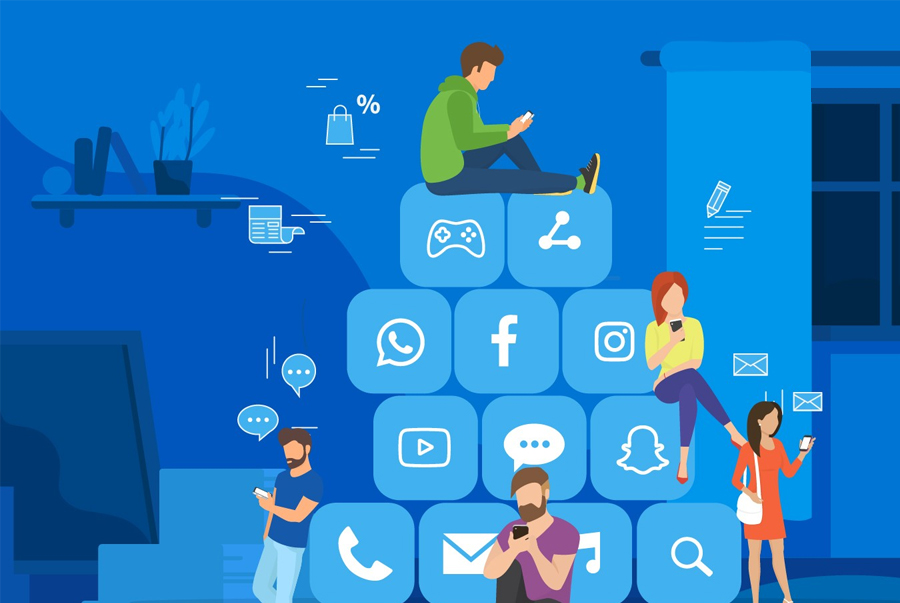Hi readers, don’t be surprised. This is not only one of the catchy words but a subject and a science by itself. Let’s get into it.
The attention economy also known as surveillance capitalism and behavioral economics is a collective human capacity to engage with the many elements in our environments that demand mental focus.
The term “attention economy” was coined by psychologist, economist, and Nobel Laureate Herbert A. Simon, who postulated attention as the “bottleneck of human thought” that limits both what we can perceive in stimulating environments and what we can do?
In today’s world, our attention is constantly invaded with information from social media, television, and countless news sources to the extent that it is difficult for one particular information source to truly mesmerize our attention and influence it. The term thus reflects an acknowledgement that the human capacity for attention is limited and that the content and events contesting for that attention exceed that capacity.
Attention economy is important in the sense that it could facilitate financing, if individuals get control over the data that they could allocate to their attention. Since time and money to social causes and platforms aligned with their values hence, attention economy could support the exchange and sharing of services and goods for the social and solidarity economy (SSE).
Nevertheless, attention economy hurt us as well because when we “pay” attention to one thing, we deplete our budget of mental resources so that we have less attention available to spend elsewhere. All theories of human attention agree that it is limited in capacity; hence, as Simon described, it is a “bottleneck” in human thought.
Scarcity (of monitory resources and/or attention), supply and demand, costs and benefits, and incentives are among the four basic concepts of economics and fundamental principles that defined purchasing behavior (both as individuals and as a society) and thus, the value of our resources and commodities. However, when the B2B and B2C world have become complex, priorities have shifted and purchasing power has changed.
B2B means business-to-business, while B2C means business-to-consumer. Each type of marketing has its advantages over the other in terms of the effort put in, but they are radically different approaches that marketers must consider as they promote their products and services. B2B refers to businesses that are focused on serving other businesses instead of themselves. For example, software, manufacturing equipment, and repair services for long-haul fleets. B2C on the other refers to businesses that are focused on the needs and interests of their customers, who are often individuals.
This has subsequently impacted the understanding of what is and what isn’t a commodity in our marketplace.
This new era and battle for consumer attention has provoked the attention economy (which used to be a given and not acquired asset) as one of the scariest commodity in businesses just because there is not enough attention to go around.
With the exponential growth of digitally derived activities, the whole new world of goods and services and the brands selling them, no household would visit the neighborhood stores for their daily purchases rather, he would purchase the groceries and order a meal from across the country with one click of a button only by providing attention on advertisement brochures instead of roaming around in the Malls and visiting store after store.
The modern attention economy is, therefore, not only an approach to the management of information that treats human attention as a scarce commodity but is also a solution that applies economic theory to solve various problems related with discipline.
To economize the attention, it is imperative to first block attention-grabbing platforms getting onto your screen followed by choosing which app and site is truly valuable to visit and read.
YouTube is the second solution that has made things simpler as it allowed the content creators to upload content from all around the world to serve the most relevant content to each of its users. But, as more businesses accelerate their digital transformation efforts, consumers are becoming saturated with content as they feel tired because content has never mattered more than fueling every channel, every experience, and every possible marketing outcome. For content to truly make an impact, it needs to be accessible, inclusive, relevant, discoverable, and usable.
Ezekiel J Ruddick: Vice President of Brand Marketing, Site improve proposed a third solution and that is to hold on to digital accessibility, which will open the doors to new target audiences, redefine contents, build new opportunities and elevate the brand’s reputation and Return on Investment (ROI). With digitally native brands, organizations need to prioritize how they are capturing the consumer’s finite attention if they want to survive and thrive in the era of digital economy.
It is important because digital consumers are human first and only have limited attention to give whereas for today’s brands to win, they need to own the largest share of consumer attention.
The recent finding from salesforce reveal that 66% of customers expect brands to understand their unique needs and expectations, and 52% expect all offers to be personalized while nearly 60% of consumers say, they are more loyal to brands that embrace diversity, equity, and inclusion.
With the businesses continuously routing towards attention economy, it is becoming abundantly clear that those who will win are creating and distributing content for every person to experience, engage, and thrive in the digital world: something that hasn’t always been the case, especially for individuals who are part of the disabled communities. It is therefore, the focus on competing for customer attention with a thoughtful content strategy that is helping to improve and elevate digital accessibility.
According to the World Bank, around 15% of the global population (that is, one billion people) live with some form of disability. Despite these high numbers, only 30% of the internet is accessible to the people with disabilities.
This means a large segment of consumers are ignored. The lack of digital accessibility deprives disabled communities of digital access especially when they need to apply for jobs, ordering groceries or products, or sending emails. Digital accessibility is therefore all about removing the virtual barriers that prevent people with disabilities from accessing and/or interacting with websites, digital tools, and technologies that have become an integral component of daily life. Hence, as businesses move into a digital future, it is imperative for the brand owner to create an unbroken online environment for ensuring superior website experiences and better access to more customers (including those with disabilities) who are going to share their brand experience with others.
By designing digital content in such a way that it does not inhibit people with visual, auditory, motor, or cognitive disabilities access or engagement, organizations are creating new opportunities for those communities and empowering everyone to thrive online.
The brands need to take a thorough and holistic approach before going to the market with their content in order to engage, inspire, and acquire the right audience through immersive content experiences which is a digital currency without which digital world can not exist.
To compete in a loud and crowded online market, brands must get ahead by ensuring their content is accessible, discoverable, and performing. It is only through “be receptive and accessible” that brands builds recognition among diverse target audiences. The message, including images, videos, sounds, and other like of this must be strategically set up to align with accessibility guidelines that are optimized by SEO (search engine optimization: a process of improving website to increase its visibility in Google) enabling it to fit into wider audience algorithm. Businesses that intentionally take such measures with their contents, play an active role in driving accessibility forward because as said by
Raheel Farooq: a writer and spoken word artist based in Pakistan, “Content is not king, but a president elected by the votes of those whom it aims to rule.”
If you don’t pay attention to this, then: “It is important to remember that your competitor is only one mouse click away” Douglas Warmer III.
For more detail, Pl read full article, “How is the attention economy driving innovation in digital accessibility.”
How the battle for audience attention demands and enables innovation in digital accessibility written by Ezekiel Rudick: vice president of Brand Marketing, Siteimprove.
That’s all for now dear readers.
See you next week, till then take care,
Bye






One Comment
Farooqe Azam
July 13, 2023 at 3:19 amGood analysis, keep it up Madam as social work, thanks